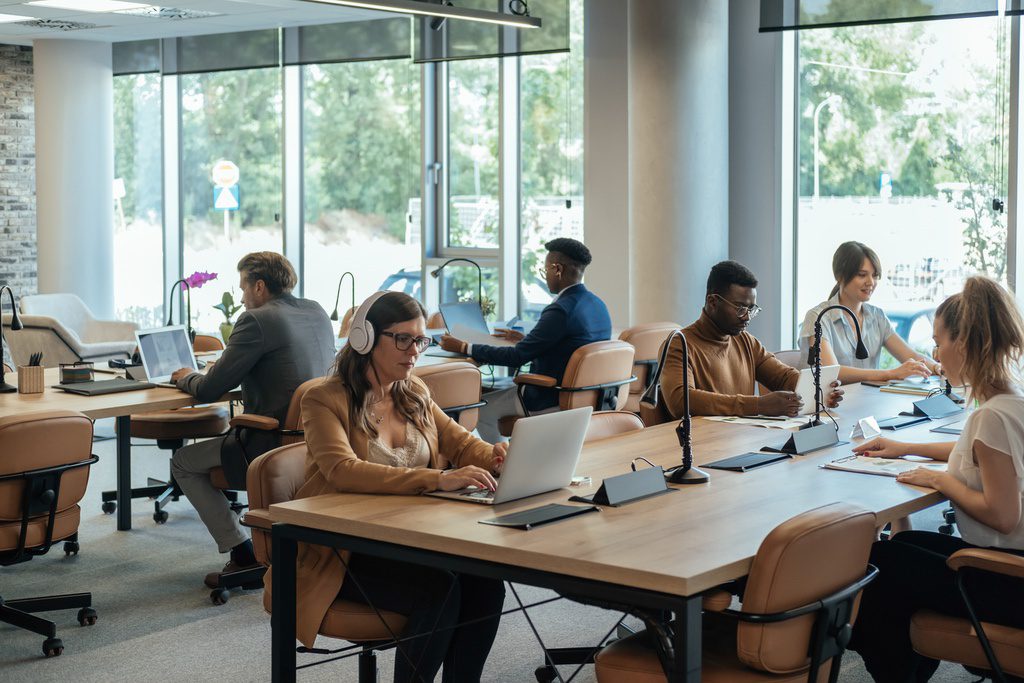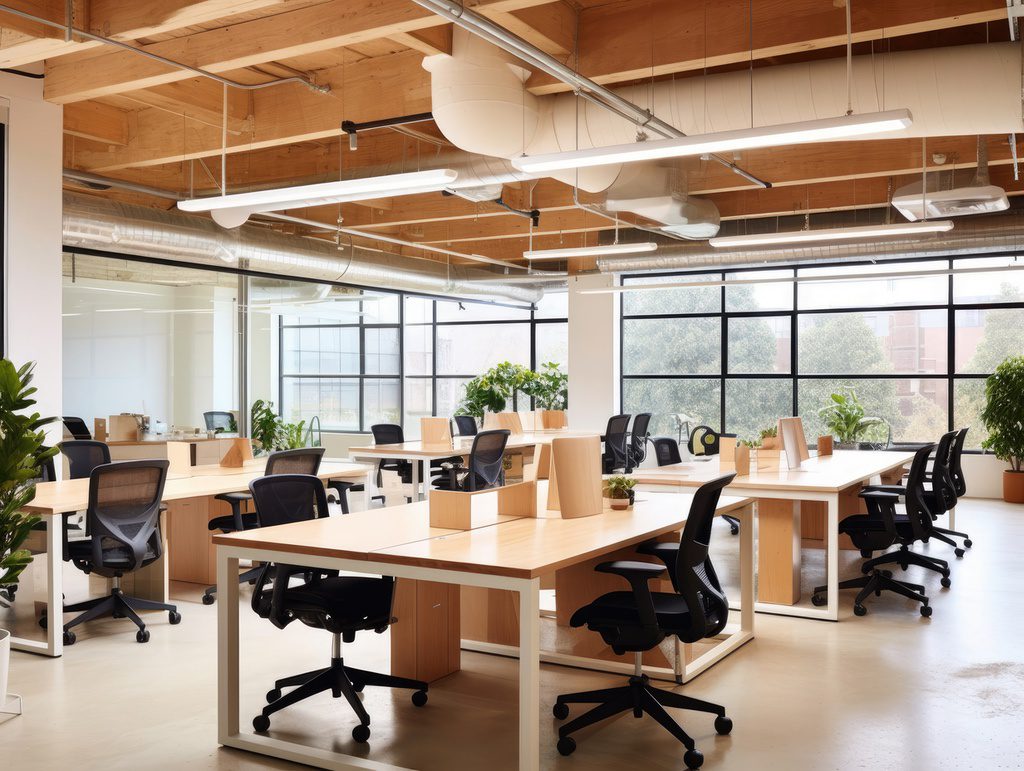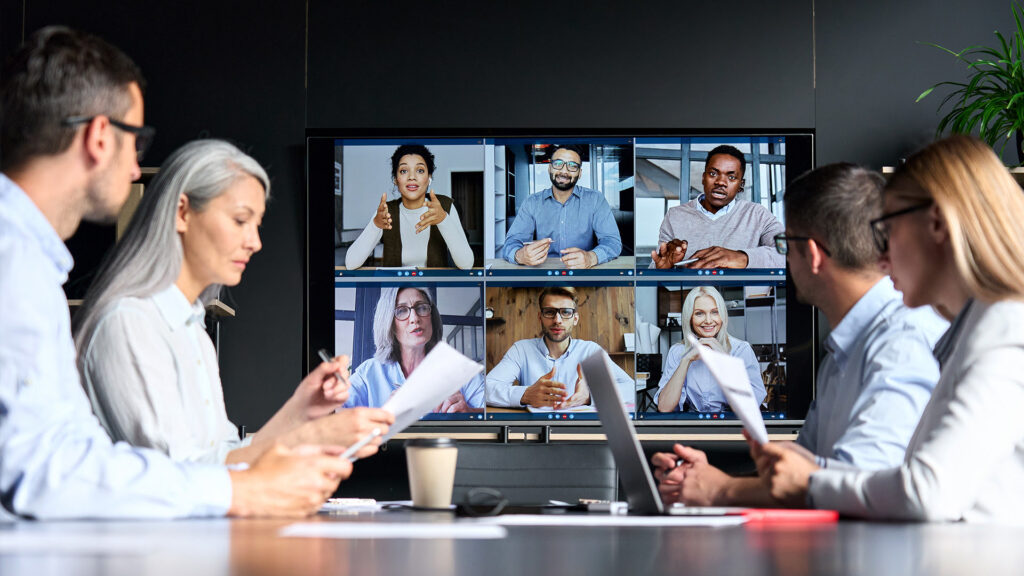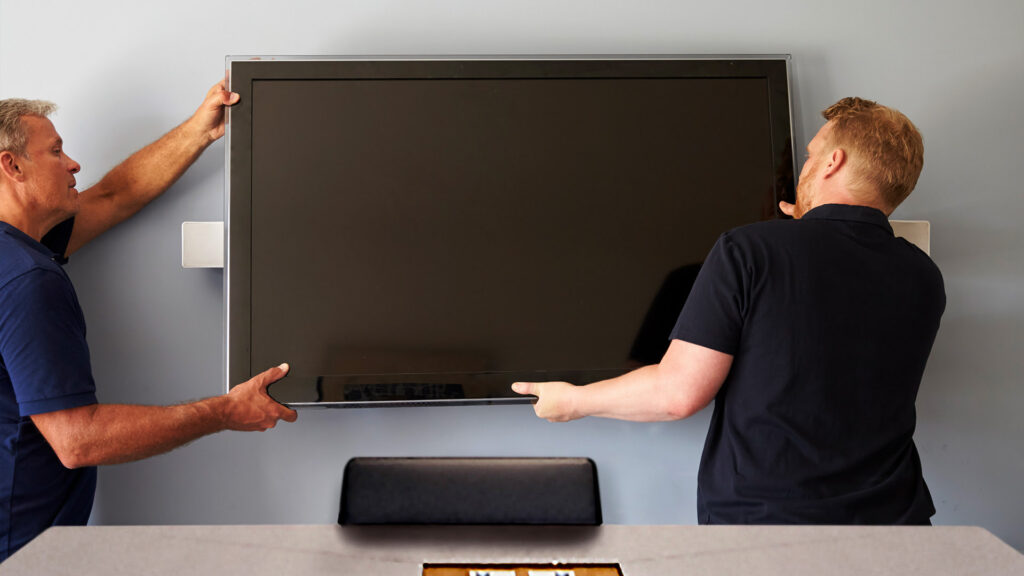Key Points
- Hot-desking allows multiple employees to share a single workstation or desk at different times, eliminating the need for assigned seating—ideal for hybrid work environments where not all employees are in the office simultaneously.
- Hot-desking maximizes office space, fosters collaboration, and is cost-efficient. However, it can lead to issues like a lack of personal space, scheduling conflicts, and standardization concerns, which need proper management.
- Key suggestions for adopting hot-desking successfully include using a reservation system, maintaining cleanliness standards, providing secure storage, managing conflicts, and standardizing tech settings. ET Group provides numerous solutions to help with this, including technology consulting and workshops for employees.
As businesses everywhere adapt to new work patterns, the traditional idea of having a fixed desk or workspace for every employee is being reconsidered. Enter hot-desking, an innovative solution that perfectly matches the requirements of modern hybrid work environments. But what is hot-desking, and how can your organization implement it effectively?
Our team at ET Group created this guide to help you introduce hot-desking to your workplace in a way that provides the best experience for everyone there. We help businesses of all kinds and sizes transition to hybrid work successfully, and we’re happy to do the same for you.
What is Hot-Desking?
Hot-desking is a practice where multiple employees share a single physical workstation or desk during different time periods instead of having assigned seating. This system is particularly useful for businesses where all employees don’t need to be in the office at the same time.
Why Hot-Desking & Hybrid Work Are Made For Each Other
In a hybrid environment, where employees split their time between working remotely and from the office, hot-desking allows you to maximize space and resources.
Remember: hybrid work isn’t just about technology and space—it’s also about creating a culture of flexibility and autonomy. Hot-desking makes it easier for your team members to use the spaces that are most comfortable for them at any given time, while allowing you to reduce your overhead. When implemented efficiently, it’s a win-win for everyone.
The Benefits of Hot-Desking
- Make the Best Use of Your Space: With hot-desking, fewer desks get left unoccupied. This allows you to use your hybrid spaces more efficiently than assigning dedicated desks to each team member when they won’t always be in the office.
- Cost Efficiency: Using hot-desking in a hybrid space actually lets you reduce the overall number of desks you’ll need at any given time. This can help you save money on both space and office equipment.
- Increased Collaboration: Hot-desking allows employees from different teams to mingle when they’re in the office and interact more, fostering a collaborative environment. Adding the right technology to your hybrid meeting rooms can also help employees working from home feel involved and engaged.
- Flexibility: Hot-desking makes it easier to adapt quickly if the size of your workforce or the work patterns of team members change. It also allows team members more choice over where—and how—they work. For example, someone might choose a desk in a quiet corner for solo tasks demanding deep focus, or move to an area set up specifically for teamwork on larger group projects.
Potential Hot-Desking Challenges
- Lack of Personal Space: Some employees may miss having a permanent workspace they can personalize.
- Potential for Conflicts: Overlapping schedules can lead to desk disputes.
- Standardization Concerns: Shared spaces must be maintained properly to avoid issues regarding hygiene or clutter—and to ensure that equipment remains useable by all members who might be at a given desk or in a given space.
Proper management and clear guidelines can help mitigate these concerns. While hot-desking can provide maximum freedom and independence for your organization’s members, it’s important to follow a few principles to help make sure everyone can benefit from it.
How to Make the Most of Hot-Desking in Your Workplace
Here are a few ideas we recommend if you’re considering giving hot-desking a go:
-
- Implementing a Reservation System: A digital booking system can prevent overlaps and ensure every employee finds a space to work. At ET Group, we offer room-booking and desk-hotelling services that help team members reserve and find their workspaces easily.
- Agreeing on Cleanliness Standards: Regular cleaning and sanitation, especially between different users, is crucial. Providing sanitizing wipes or stations can be beneficial.
- Providing Secure Storage: Offer lockers or personal storage spaces to ease concerns about the security of personal items. This also makes it easy for people to grab the items that personalize their space and set them up for work, then store them again at the end of the day.
- Managing Conflicts: Clear guidelines and a designated team or individual to handle scheduling or reservation issues can prevent disputes.
- Standardizing Tech Settings: Making sure devices and software are put back to their default settings at the end of each session prevents users from experiencing technical challenges when they switch areas. ET Group’s automated room testing services can check these settings between sessions and restore them to keep user experience consistent.
- Getting Data-Driven Insights About Your Hot-Desking System: Tools like Microsoft Places and Cisco Spaces can harmonize your hot-desking technology and provide useful metrics about how people are using it. This allows you to make continuous improvements to your workspace and help it evolve to keep pace with new innovations in hybrid work.
See Also:
The Future of Hot-Desking in Hybrid and Flexible Work Environments
As the boundaries between home and office continue to blur, the future of work will likely see an even greater need for flexibility. Hot-desking, when implemented with careful consideration, can provide a big win for both employers and employees, offering a blend of efficiency and adaptability.
With the right strategies in place, this approach to using workplace space can be a pillar of support for your hybrid environment. Contact ET Group to learn more about how we can set your workplace up for success, and browse the FAQ below for more information.
Frequently Asked Questions about Hot-Desking in Hybrid Spaces
Does hot-desking make information security more difficult?
Some organizations worry that hot-desking creates a security risk, since each device in your space will be accessed by a wider number of different users. However, managing account access and permissions ensures that information is no more likely to be lost than it would through any other shared endpoint (for example, the computers in a university library). ET Group offers technology consulting services that can help you ensure your hot-desking tools keep your hybrid workplace secure.
How can I improve data security when multiple employees share workstations?
It’s essential to ensure that every workstation is equipped with robust security protocols. This includes ensuring employees log out after each session, use secure and unique passwords, and having IT support conduct regular security checks. Our remote support solutions can assist by detecting potential incidents ahead of time and allowing you to respond proactively, further minimizing your risk.
How can I encourage my team to embrace hot-desking?
Change can be challenging for some. It’s crucial to communicate the benefits and reasons for transitioning to hot-desking clearly. Offering training sessions, guidance on the reservation system, and emphasizing the added flexibility can help. Additionally, seeking feedback and being open to making adjustments based on employee input can ease the transition. ET Group provides workshops that help organizations and their members understand and adapt to hybrid work, including hot-desking tools.
How do I handle situations where employees have special requirements or needs for their workspace?
It’s important to be accommodating and understanding of special needs, whether they relate to physical requirements, medical conditions, or job-specific tasks. Dedicated spaces or equipment can be reserved for such employees, or you can ensure the booking system allows them to reserve spaces that cater to their needs in advance. Communication is key: encourage employees to discuss their needs with HR or management so suitable arrangements can be made.
Stay connected with us:
Follow ET Group on LinkedIn
Follow us on Twitter
Subscribe to ET Group’s YouTube Channel









